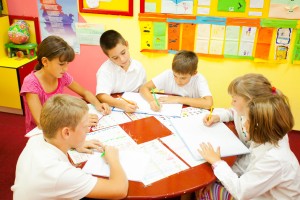Guest Blogger, Telannia Norfar is an exceptional teacher of Math. She helps students understand math by using a variety of perspectives that truly differentiates instruction so that all can learn. She currently resides and works in OK. She also works with schools nationally on project-based learning. Follow her on Twitter @thnorfar. Here is her assistance with examples of apply Linear Equations to Authentic Learning Experiences (ALE).
Linear equations is a very common real-world topic. Solving equations takes some creativity. However, graphing and writing a linear equation is easily accomplished in a PBL.
The type of project you can do with this topic is wide. Any time there is a consistent addition pattern in life than you can make a PBL based upon linear equations. The success of it will depend on the interest of the students. Below is a description of three projects I have done that all have to do with linear equations just taken from different angles based upon my outcome.
Cell Phone
This project I have done the most over the last five years. The project idea is that the students are helping the PTA be educated on how to select the best cell phone plan. Students analyze a cell phone bill to create a linear equation of how to calculate the bill. Students then move to analyzing different cell phone plans by creating a table, equation and graph of the plan. Students then compare the different plans to help them discover which one is the best for a family needs. The project (or ALE) concludes with students creating a brochure that explains how to analyze a cell phone plan and graphs of what the students have discovered is the top ones based upon family needs.
Here is a link to my dropbox where all of the materials I have used over the years for this project.
State Fair
I have only done this project once because I no longer teach Algebra II. The focus in this project was to understand systems of equations. However, you can make the focus on linear equations. Students created equations of the various costs associated with attending the fair (examples include admission and rides). Students then graphed and created tables of the equations. Students analyzed when was the cost the same as well as what it meant before and after the intersecting costs. This does not have to occur if you are focusing on linear equations only. Here is a link to my dropbox where all of the materials I used for this project.
Fundraiser
The final idea I have to share is related to a project (ALE) I did with a middle school 7th grade class. The focus of the project was slope only but students did unknowingly learn about writing and graphing linear equations. The school had a dance they held every spring as a fundraiser. The principal commissioned the class to offer suggestions of what items they could sell at the dance to increase their profit. Students offered suggestions in the form of graphs and tables to show how the profit could be obtained compared to the items sold.

